This blog was written by Keith Lewin, Emeritus Professor of International Development and Education at the University of Sussex, and Chair of the UKFIET Trustees. The author will be making a presentation entitled ‘Financing, Fallacies and Futures beyond 2020: Is Aid to Education Fit for Purpose’ at the September 2019 UKFIET conference on inclusive education systems, where he will discuss this and other issues about the future of aid.
Aid to education
Much has been made of the fact that aid to education reached a plateau in 2010, and has ceased to grow since. Aid to education increased from 2000 to reach about US$13 billion per year by 2010. This was about 10% of all aid. In 2017, the total was still around US$13 billion, representing a real decline and it had fallen to less than 8% of all aid. The largest fall was in the contribution from DFID (Global Education Monitoring Report 2017/2018). The key point is that global aid to education now seems to be falling consistently below its long term average and there and there are no signs that there is an appetite for a sustained increase.
Despite over five decades of aid to education and disbursement of over US$500 billion in the form of grants and
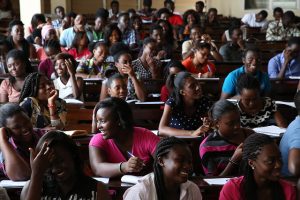
University of Ghana students listen to their political science professor, Dr. Evans Aggrey-Darkoh in Accra, Ghana on October 14, 2015. Photo © Dominic Chavez/World Bank
loans, gaps in educational financing have persisted. Though the number of aid dependent countries has fallen, there remains a cluster of the poorest and most ineffectively governed states that have remained unable to finance public services adequately. Project based approaches, whole sector support programmes, general budget support and other kinds of “gap filling” aid have failed to fill gaps, and have yet to lead to the sunny uplands of sustainable development.
Since the Sustainable Development Goals (SDGs) were announced in 2015, several analyses have been undertaken that show massive financing gaps if the ambitions of SDG4 for educational development are to be realised. They lead to calls for very large increases in grant aid and an unprecedented surge in concessionary financing and consequential debt. The problem is that without a radically different approach, more of the same kinds of support will lead to more dependence and unsustainable debt. It is time to look again at whether more “gap filling” grant aid and borrowing will be fit for purpose. Alternative strategies are needed to ensure that the number of countries receiving grant aid and concessionary financing falls by 2030 for the good reason that aid has accelerated development and increased the number of fiscal states that are self-financing.
Grants and loans
It is important to understand that grant aid can never support the recurrent costs of education systems, since grants are not a form of sustainable financing. Loans can offer short-term relief from financing crises but are unsustainable when revenue does not keep pace with government expenditure. Concessional loans are easier to service than borrowing from capital markets, but still require repayment of capital, interest and management charges that eat into their real value and benefit lenders.
Grant aid to basic education is now concentrated in a relatively small number of countries. Though the list of all recipients is long, the number of substantial beneficiaries is short. For example, the Global Partnership for Education (GPE), the largest source of aid to basic education, disburses about US$500 million per year, which is equivalent to significantly less than 1% of the amount governments in sub-Saharan Africa (SSA) spend on education. If it were distributed equally across SSA it would amount to about US$10 million per country per year. However, about a quarter (24%) of the 60+ countries receiving this aid account for nearly 70% of all GPE aid by value. Some large countries like Ethiopia, Pakistan and the DRC are the major beneficiaries. In contrast, 5% of grant aid is distributed across over 40% of the member countries. Grant aid can only have a marginal impact on educational development in most countries as the amounts are very small relative to domestic investment in education.
The recently International Facility for Financing Education (IFFEd) projections of financing gaps identify unprecedented shortfalls in recurrent finance that reach as much as US$17 billion a year in low-income countries (LICs) and US$71 billion in low- to middle-income countries (LMICs). These “gaps” could not be filled with imaginable levels of grant aid. If they were financed by loans, as the IFFed suggests, the amounts needed would create unprecedented levels of dependence on external finance, which would be larger than domestic financing. The financing would be very uneven. A total of 64% of the projected “financing gaps” are in just 10 countries. Only one of these is an SSA country. Strangely, one of the countries with the largest projected financing gap (India) actually claims to give more aid through its own aid programmes than it receives from other countries.
The IFFEd argument for more borrowing is that “Just when many countries start to emerge from very low per capita income, their growth is constrained as domestic taxes and market related public borrowing fail to expand fast enough to compensate for loss of concessional finance”. This kind of “compensation” will strike many as an odd idea that has a touch of Alice in Wonderland. If the consequence of countries achieving development targets was to attract more aid, this would provide a perverse incentive to suppress domestic revenue collection, increase underinvestment in education and undercut non-concessional market lenders.
The changing landscape for educational financing
The good news is that development is happening in many LICs and LMICs, especially in SSA. The best estimates of growth in Gross Domestic Product (GDP) anticipate an average of nearly 5% p.a. based on the most recent 5-year projections of the IMF. At this rate, education budgets will increase by 60% in 10 years. Economic growth will move about half of the current LICs into the LMIC category and some will become upper middle-income countries (UMICs) by 2030. These transitions will reduce gaps in educational financing as more revenue is collected.
In 1990, SSA received twice as much in aid as it generated in tax revenue. By 2015, tax revenue was twice as much as aid. In Africa, tax, not aid, is now the dominant source of public finance in most countries and this will become more and more so in the future. The number of “fiscal states” that have the capacity to finance their public services from revenue has increased to more than a dozen since 2000. They can then make their own decisions to borrow without reference to aid and its conditionalities and risks.
African governments are becoming more effective at converting tax legislation into revenue streams with lower rates of avoidance and higher capture rates. As a result, aid is becoming less important. The amount the GPE can disburse is little more than 0.5% of the additional amounts needed globally for recurrent financing for the Education 2030 agenda. At the GPE replenishment conference in Dakar in 2018, recipient countries pledged to increase spending on education to at least 20% of their public budget and 4%-6% of GDP. These pledges amounted to US$110 billion a year, dwarfing the US$2.3 billion pledged by the donors to the GPE over three years. This was a reminder that most of the financial challenge for education is now for domestic financing, and will not be financed by grant aid that is not sustainable.
The IFFEd is proposing the largest increase in loans related to education in history. Borrowing has been increasing since 2008 and the IMF has issued warnings that ten countries in SSA have excessive repayment burdens. A further ten countries have been increasing their debt rapidly. More borrowing to cover recurrent costs of education systems risks a repeat of the debt crises of the 1980s. The headroom for more lending to LMICs is uncertain and not based on evidence of new demand from borrowers, but on assertions by lenders that national governments should borrow more. There are better ways to raise revenue and increase educational spending that do not carry the risks of non-accrual and default, or the substantial transaction costs of the financing.
Taxes for development
SSA has not been good at collecting taxes, but is getting better. Revenue averages about 16% of GDP, but there is a need to collect more like 25%-30% to finance education with the 6% of GDP needed to reach SDG4. In SSA, income tax is responsible for between 5%-10% of all tax revenue. This compares with over 40% in OECD countries. Only about 5% of all people who live in Africa pay income tax, compared to 50% of adults in the OECD. Most that do pay are mid-level employees of governments and large companies. Data from one East African country show only 5% of all company directors pay any income tax, and few of the wealthiest officials pay any income tax at all. It has become clear that about 5,000 Africans have been holding assets of over US$6 billion in just one branch of one Swiss Bank. This is much more than all the annual grant aid to education in SSA. The wealthiest client with a personal account balance of over US$700 million came from one of Africa’s poorest countries. This suggests that large amounts of income and assets are diverted off-shore and are likely to remain untaxed. The result of the tax evasion and avoidance is gaps in educational financing.
There is plenty of scope to raise more revenue and reduce the need for aid to temporarily fill “financing gaps”. Those who argue that tax burdens in Africa are already high are often responding to popular aversion to any taxation and lack of information on who pays how much tax. Sharing key elements of the national accounts more widely would help remind citizens of how uneven the tax burden can be, how little of what is mandated is collected, and how much is needed to finance public goods, including schools and colleges. More use of unexplained wealth orders and compliance with money laundering legislation is needed. Property taxes are a small proportion of the fiscus but are efficient, equitable to collect, and difficult to evade. Corporate taxation is also often minimal with widespread use of transfer pricing and avoidance of payment of taxes in the markets that generate turnover. Much exploitation of natural resources is barely taxed at all.
The fundamental point is that a 2% increase in the collection of revenue in SSA would be roughly equivalent to all the grant aid to basic education from Development Assistance Committee (DAC) countries. It would not have to be replenished on an ad hoc basis every three years. It would be complemented and increased by real economic growth that would result in yet more revenue to fund more services. More domestic revenue will be generated in most African countries as economies grow and revenue collection becomes more efficient, evasion more difficult, and money transfers more transparent. The uncertainty is more about how additional revenue will be spent than whether more will be collected. The critical shift in perspective is to realise that supporting fiscal reform is a powerful form of aid to education.
Ways forward
The challenging new insight is therefore that the goal of external financing should be to reduce the need for more external financing and the number of countries that are recipients. This sounds blindingly obvious but the record suggests that it is yet to be a reality, especially in SSA. Development is something that can be accelerated by aid and concessional finance but is not caused by it. Dependency theory has reminded us that “to develop” should be an intransitive rather than transitive verb with the onus on countries to develop themselves, albeit with judicious and strategic assistance to accelerate progress where bottlenecks of capital and capability block progress. This fundamental truth remains the case.
Gaps in financing are generated by aspirations and by the failure to match these with the political economy of good governance that balances spending with revenue collection. Extending the ambition level to enrol all children from pre-school to grade 12 is creating unrealistic demands on public finance. Now that 53% of all out-of-school children, as defined by UIS, are over the minimum legal age of work, it is less clear than before that the cost of their enrolment should be met by concessional external finance. This looks like mission creep that is avoiding the real political economy of endogenous development strategies. More aid is still needed, but not of the gap filling kind that has failed to result in sustainable financing of educational development in the past.
Fiscal reforms are needed that can increase domestic revenue to levels needed to achieve the targets set by national governments and the SDGs. All countries have to have a viable social contract with citizens to deliver quality public goods in exchange for taxation. Aid and subsidised lending can never be a substitute for domestic political will.
The next decade will tell if the refreshing rhetoric is matched by a new willingness to reduce the need for more aid and over-dependence on sub-prime lending into the indefinite future. The task is to find solutions to how to pay costs not once, but once and forever, through fiscal reforms rather than through the well-intentioned but volatile benevolence of aid.
Thus, there is no solution to closing educational financing gaps that does not depend on the development of fiscal states that can fund public goods from domestic revenue. There is no solution that does not also work to promote efficiency and effectiveness and mobilise resources to best effect and minimise negative effects on the physical and social environment. Enduring solutions are necessarily endogenously not exogenously driven.
“Peak aid” is a good thing if it signals the success of previous aid in catalysing transitions to fiscal states and educational reforms that increase efficiency and effectiveness and thus increases affordability. If the number of countries receiving aid to education does not fall, it will signal the ineffectiveness of the existing pattern of grants and loans. That is a bad thing.

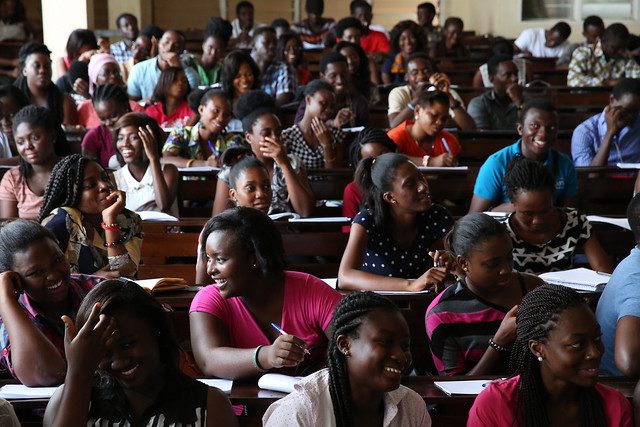

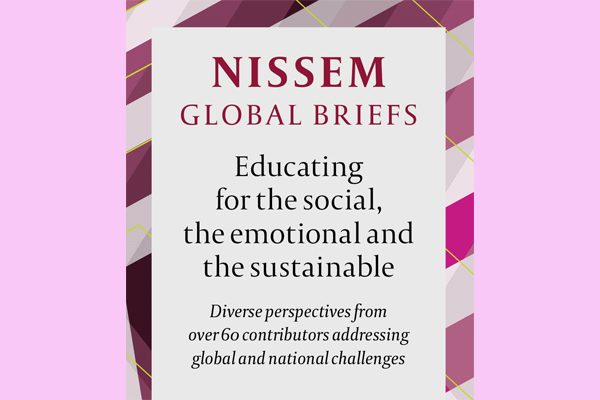
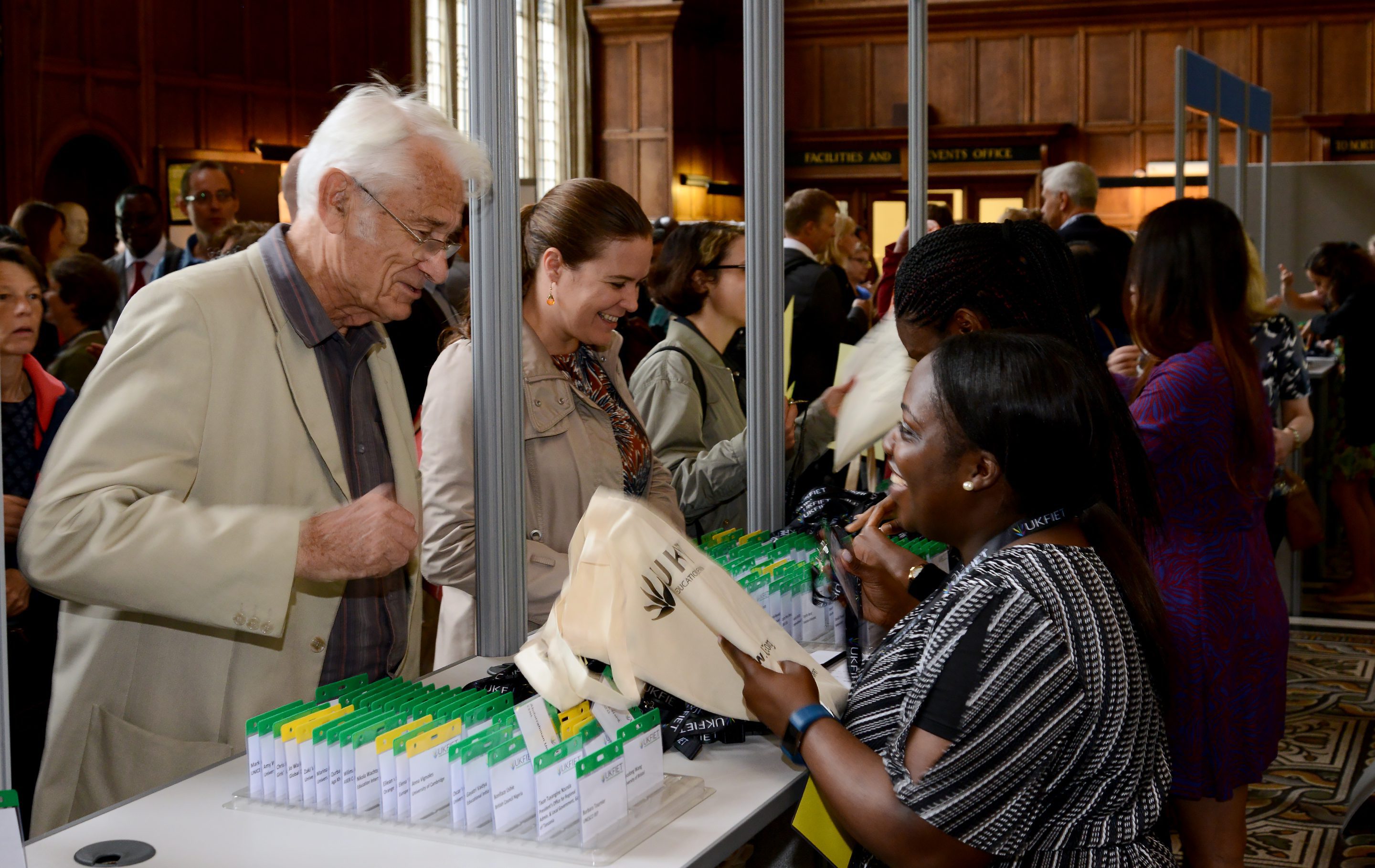
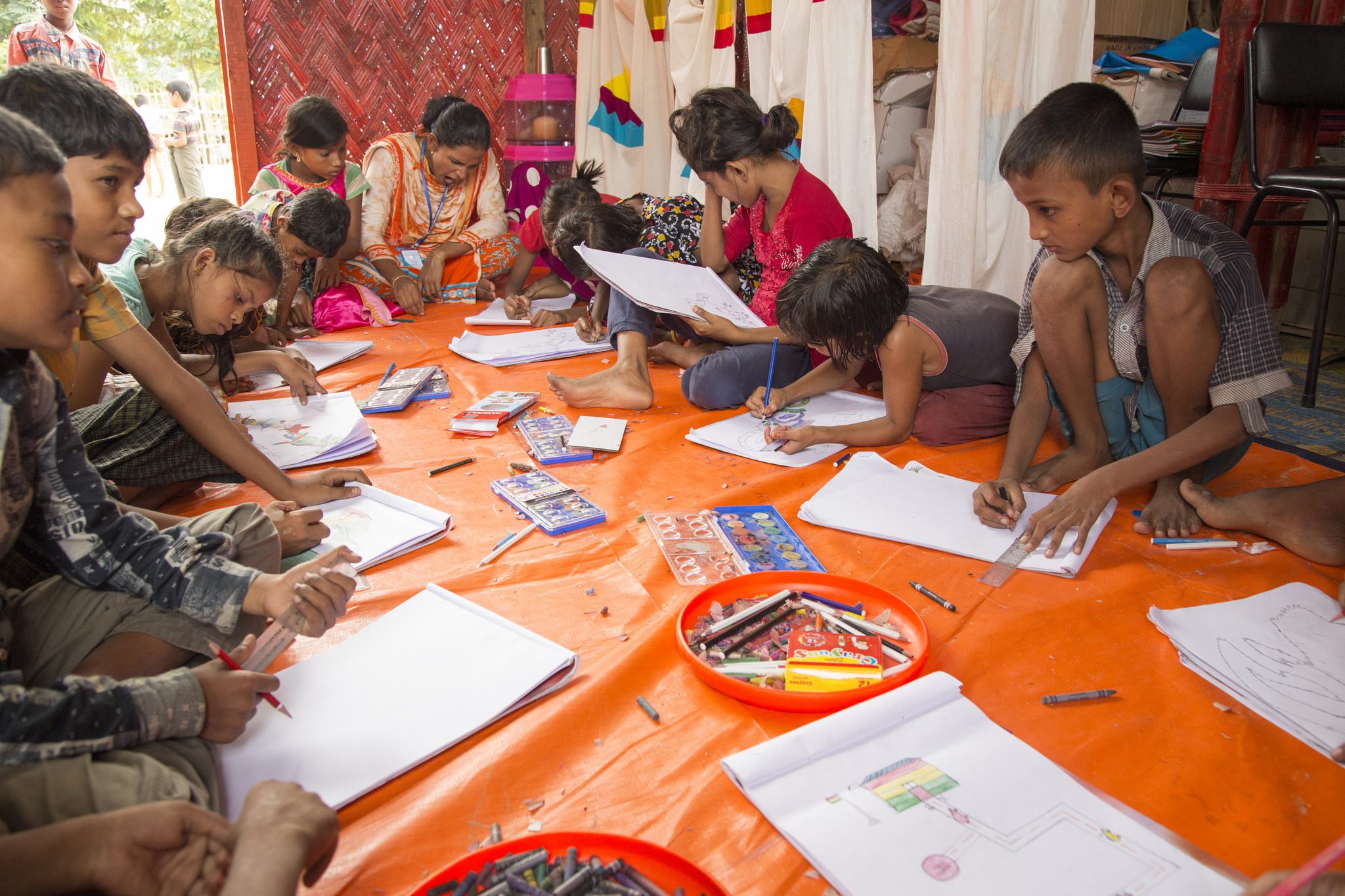
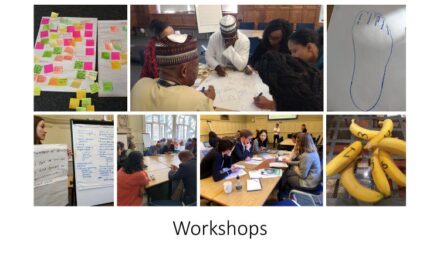
Such an important discussion! Five years into the SDGs, and there is already a very real concern that the huge global efforts being mobilised will hardly make a dent in the massive needs in many LMINs. My concern is also about the kinds of costly accountability and measurement practices that are seen as required – not by the nations themselves, to improve their students’ learning, but by aid agencies, so that they can track progress and report to donors. Demands for accountability seem to have a trickle-down effect and end up taking up the time and energy of bewildered teachers and principals and lower-level bureaucrats, distracting them from focusing on improving their education provision. A serious rethink is required – attempts to orchestrate reform at this colossal global scale appears problematic and unworkable. I look forward to your session!